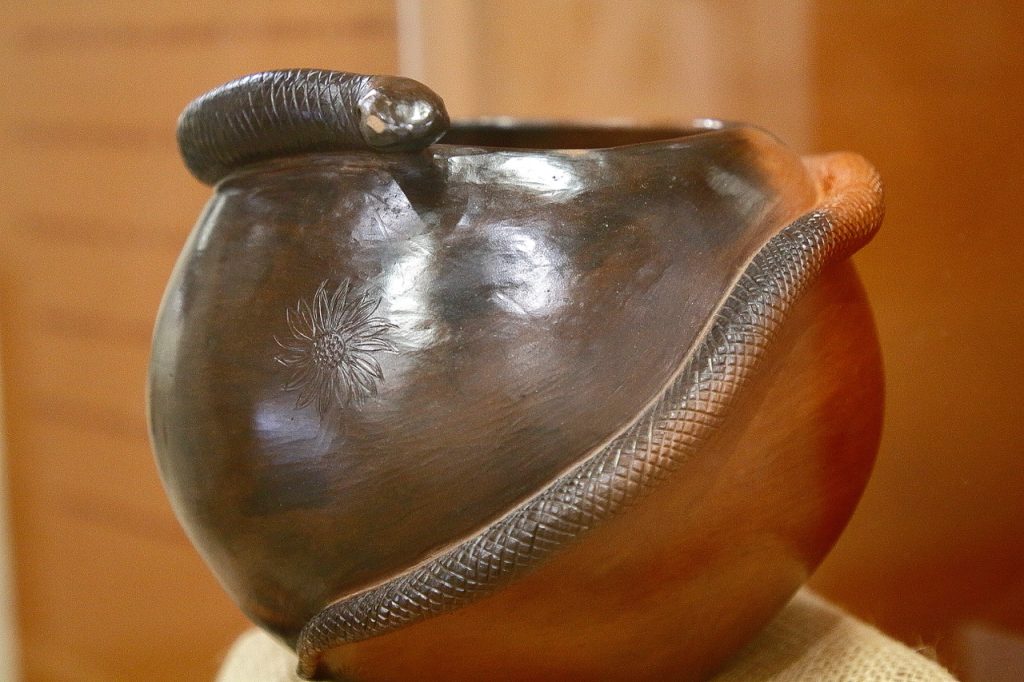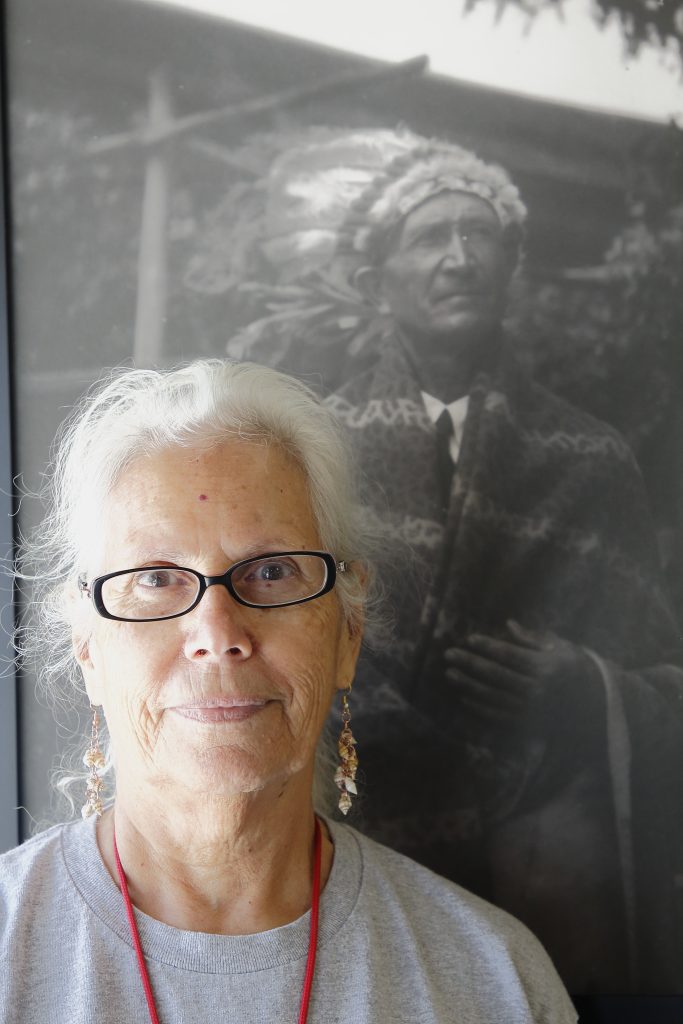From Sacred Earth—Catawba Pottery
October 17, 2024By Tom Poland
On a hot July Saturday I drove to the Native American Studies Center in Lancaster, South Carolina. First chance I got, I abandoned I-20 for U.S. 21. Near Great Falls, boulders burst from the ground like leaping whales. I peeled off onto Highway 200 and made my way to the center on South Main Street, stepped from my car, and entered the deep past.
I’ve long been working on a Catawba pottery story, and this made my third trip to the 6,500 square-feet exhibit-gallery to see the art, archaeology, folklore, history, and language exhibits that wait for you, too.

Caroleen Sander’s black snake cooking pot.
Entering the center, I met Catawba potter Beckee Garris. I know her as Beckee, but her tribal name is Ni Yat nya dapahin uhri nupajtare nemüksawa —“Woman Who Sows Seeds of Forgiveness.”
In an earlier visit to the center, Caroleen Sanders gave me a detailed account of the process of making Catawba pottery. Caroleen’s tribal name is Nootie Wa-chow-a, “Night Moon.” To begin, Catawba pottery is unique. Catawba potters dig sacred clay just as ancient tribe members did. It’s coil built, never glazed, and never fired in a kiln. Smooth, satiny, and a bit elusive. That’s how a slippery clump of pure blue Catawba clay feels. It doesn’t come out of the ground that way. It takes labor, a bloodline, and mastery to extract that clay from Mother Earth’s clutch and refine it to a creamy soft blue. And when talent and tradition transform it into a hallowed vessel fired by coals, beautiful Catawba pottery results.
A tradition passed down for over 6,000 years, Catawba pottery has avoided modern developments such as the potter’s wheel and kiln. It’s the oldest continuously practiced traditional art form east of the Mississippi River. Catawba pottery and the Catawba Indians’ cultural identity are synonymous. One of the older and purer art forms of its kind, the Catawbas, native to the Carolinas, have always maintained their tradition. Not once has it ceased to exist. And that’s important. Said Caroleen, “The clay has kept us Catawba people. We cannot let it die.”

Beckee Garris stands before a portrait of her great-grandfather, Chief Samuel Taylor Blue.
As Beckee gave me a tour of the center I came across Caroleen’s pot, the one you see with this column, a cooking pot. Catawba potters hold the black snake sacred. The black snake wards off creatures from her cooking pot that would eat the bowl’s contents. Caroleen etched the sunflower with a shell.
Catawba pottery remains true to itself and distinct from modern pottery making. Colors come from the clay. It’s unglazed. Once it’s air-dried, the potter scrapes it with a knife, bone, or antler. When it’s leather-dry, the potter strokes it with a river stone to give it sheen. It looks as if it’s been glazed.
As Beckee and I talked, I saw crow pots, all manner of pieces, ceremonial and functional, and I saw arrowheads, beautiful baskets, and the iconic Thunderbird, important to indigenous cultures in North America. Seen as protection against evil spirits and an overall symbol of power and strength, it’s one of the more powerful spirits in many Native American cultures.
Beckee told me “the Native Americans Studies Center was a dream of former dean John Catalano, working with the city of Lancaster, and coming together to see the vision of creating a spectacular place that honors and respects all native people of South Carolina, and the hard work that went behind it, and to make sure that all natives in South Carolina were treated with the utmost respect that all people deserve.”
Pay it a visit. Native American Studies Center, 119 South Main Street, Lancaster, South Carolina. Check its website for hours.
Photos by Tom Poland.
Georgia native Tom Poland writes a weekly column about the South, its people, traditions, lifestyle, and culture and speaks frequently to groups in the South. Governor Henry McMaster conferred the Order of the Palmetto upon Tom, South Carolina’s highest civilian honor, stating, “His work is exceptional to the state.” Poland’s work appears in books, magazines, journals, and newspapers throughout the South.
Visit Tom’s website at www.tompoland.net
Email him at [email protected]



















